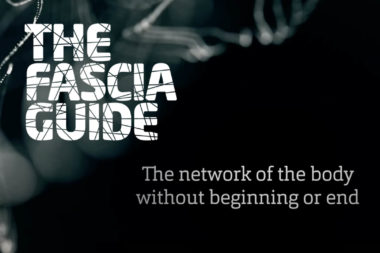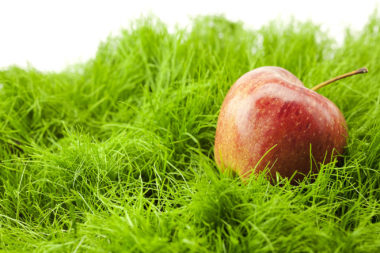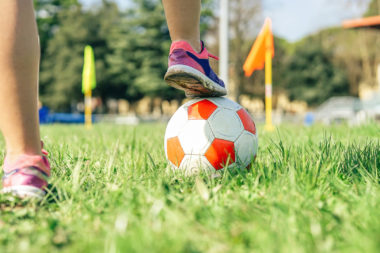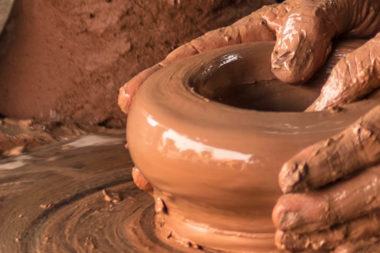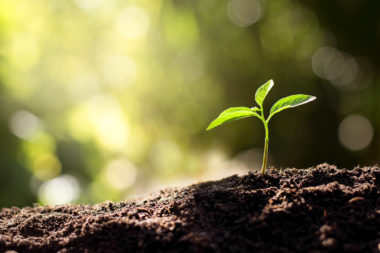
The importance of vitamin C in pregnancy, childbirth and jaundice in newborns.
Join the Fascia Conversation Today!
Vitamin C has many different actions in the body. It is a coenzyme, which assist in various physiological processes in the body and it is a powerful antioxidant. As a co-enzyme, vitamin C contributes, among other things, to the production of collagen and to the interweaving of a stable collagen molecule and collagen fiber. Without sufficient vitamin C, the collagen is debilitated, and the deficiency disease is scurvy. Collagen is a protein found in all types of connective tissue and collagen makes up about 30% of the body’s total protein content. Large amounts of vitamin C are needed to produce a strong collagen.
During pregnancy, the need for vitamin C is greater than normal since a fetus is to be built from scratch. This means that large amounts of collagen are needed for bone, cartilage, skin and all types of fascia. In the fetus everything needs to be recreated, a new individual is to be formed, so a lot of collagen, and thus vitamin C, is needed, unlike an adult individual who only needs to repair and maintain the tissue.
Researchers have examined the content of vitamin C in various tissues, compared to the mother’s blood plasma;
- The placenta – contains two times as much as the mother’s blood plasma levels.
- Umbilical cord – also contains twice as much as the mother’s plasma.
- The fetus itself – twice as much as the mother’s plasma.
- The amniotic fluid – three times as much, the fetus bathes in and swallows amniotic fluid and the entire intestinal tract is filled with it.
The fetus receives vitamin C from the mother via the placenta, and tries to take what is needed even if it generates deficiency for the mother. But if the mother has a deficit, there is nothing to get and then the fetus will have a deficit. That is why vitamin C supplementation is so important during pregnancy!
The stress of being born and the importance of vitamin C
In addition to pregnancy, delivery and labour consumes very large amounts of vitamin C, then it is a huge stress for both mother and child. It has been seen that the levels of vitamin C in the mother decrease after delivery, since she has experienced a stressful situation.
Being born is a tough trauma, an incredible transition from fetus to child. At birth, large amounts of chatecholamines (norepinephrine and adrenaline) are produced from the fetal adrenal glands to cope with the severe stresses on the body. The child is squeezed with great force through a narrow birth canal and is periodically exposed to oxygen deficiency and the child’s head is subjected to constant pressure for several hours. Once outside, the lungs and other organs should suddenly “manage themselves”.
The amount of stress hormones measured in the child at birth exceeds all other measured stress levels. You are never as strong as you are when you are born!
Lagercrantz & Slotkin, 1986, have shown that the levels of stress hormones (norepinephrine and adrenaline) in a newborn are about 10 times higher than the mother’s stress hormone levels at delivery and twice as high as other serious stress situations in an adult.
Obviously, the purpose is good, and it is completely normal, since it should kick starts organs and immune systems in the child. For example, the stress hormones dry up the baby’s lungs from amniotic fluid so they can begin to breathe air and help the child cope with the low oxygen levels that often occur during delivery.
However, the process creates a lot of inflammation and oxidative stress, with the formation of large amounts of free radicals, and there have to be ways to deal with it. This is why the mother’s (and thus the child’s) levels of vitamin C are important.
Vitamin C, which is a powerful antioxidant, is to be transmitted to the baby from the placenta via the umbilical cord, also for a while after birth and then via breast milk.
Blood that is in the placenta and umbilical cord, containing a lot of important substances (nutrients, hormones, etc.), continues to flow to the baby for a while after birth, but unfortunately, the umbilical cord often is cut off directly after bith, in hospital, and thereby impede important nutrients and blood for the child.
In large grazing animals (different ungulates), the umbilical cord is kept intact until the mother or baby gets up, as it naturally breaks at a special “waist”. In predators, which lie in a lair to litter, the mother eventually chews off the umbilical cord and eats up the placenta (with much needed hormones and nutrients).
If the mother has sufficient vitamin C levels, then the child will be helped to relieve the oxidative stress. If the mother is deficient in vitamin C, the baby will not get enough. Then, according to several researchers’ theory, there is a plan B, the bilirubin, which is an almost as powerful antioxidant as vitamin C. Bilirubin is a yellow, fat-soluble dye that is formed when the hemoglobin in the red blood cells breaks down. It has only been considered a waist product, but it is also a powerful antioxidant. Normally, the liver takes care of the bilirubin so that it becomes water-soluble and can be excreted from the body and that is what gives color to bile, faeces and even urine.
Newborn babies have an increased degradation of red blood cells. Life in the uterus requires more red blood cells to oxygenate the fetus than is needed since the baby begins to breathe air with the help of the lungs. Therefore, large amounts are broken down in the first time but at the same time the liver is immature, so it is unable to take care of the bilirubin, which results in jaundice in the newborn baby.
At high bilirubin levels and jaundice, the newborn gets phototherapy to make the bilirubin disappear faster from the body. What you are afraid of is that high levels of bilirubin can get through the child’s immature blood-brain barrier and cause neurological damage. In a report by Dahiya et al, 2006, it has been found that the child’s levels of harmful oxidative substances increase after phototherapy, while reducing the levels of several antioxidants. They mean you should be careful with phototherapy as it destroys the protection against the oxidative stress and can instead harm the child.
Research shows that high levels of bilirubin in newborns coincide with low levels of vitamin C and E (both antioxidants). When vitamin C and E were high, the bilirubin was low. Therefore, it is important to have extra vitamin C supplements both during pregnancy and delivery. Many researchers believe that supplements of at least 5- 6 g/day should be given throughout pregnancy. Dr Klenner, in the 1950s, used really high doses and said that 10 g/day should be taken at normal and much higher doses when in stress and illness. He also believed that the pregnant woman should have a booster dose, preferably intravenously, just before delivery. Garbelli (1957), gave pregnant vitamin C supplements, 1 g/day, from the first trimester to childbirth and found much fewer occurrences of jaundice in newborns.
Conclusion, supplement with vitamin C (and other antioxidants) are especially important during pregnancy!
The importance of vitamin C in pregnancy, childbirth and jaundice in newborns.
- Abdul-Razzak KK. et al, 2007. Antioxidant Vitamins and Hyperbilirubinemia in Neonates.
- Abdul-Razzak KK. et al, 2008. Antioxidant vitamins and glucose-6-phosphate dehydrogenase deficiency in full-term neonates.
- Dahiya K. et al, 2006. Antioxidant Status in Neonatal Jaundice Before and After Phototherapy.
- Garbelli G, 1957. Use of Vitamin C in Pregnancy, Especially in Prevention of Jaundice of the Newborn.
- Huertas et al, 1998. Lipid peroxidation and antioxidants in erythrocyte membranes of full term and preterm newborns.
- Lagercrantz H & Slotkin TA, 1986. The “Stress” of Being Born.
- Nakai T. & Yamada R, 1978. The Secretion of Catecholamines in Newborn Babies With Special Reference to Fetal Distress
- Slotkin TA & Seidler FJ, 1988. Stress in the Fetus and Newborn.











